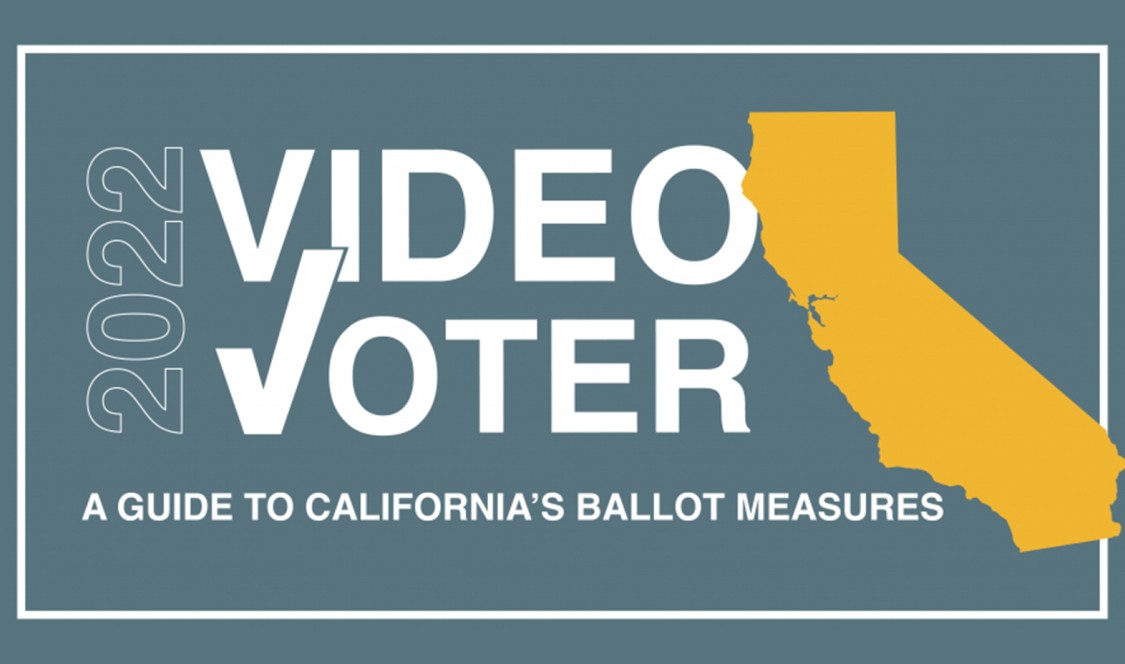Just in time for election season, the Rose Institute of State and Local Government has debuted the student-produced Video Voter Guide, a nonpartisan resource for voters in the Golden State to research the propositions on their 2022 California ballots.
While Election Day is Nov. 8, many California voters are already busily preparing their ballots to either vote-by-mail or drop off in election boxes throughout the state. Fortunately, the Video Voter Guide is a useful resource, providing thoroughly researched, easy-to-understand explanations of the often-complex measures.
Rose Institute students have produced a Video Voter Guide each election cycle since 2012, and the process presents a valuable learning opportunity.
“Students gain a thorough understanding of the policy issue covered by each measure, as well as practical skills in distilling a complex topic to its essentials and presenting it in an accessible way,” said CMC Professor Ken Miller, director of the Rose Institute.
In addition, Miller points out, the fact that these explainers are created by a team of nine college students, offers a youthful perspective that also sets them apart from other voter guides, “which are produced by government officials, journalists, or interest group and campaign professionals,” he said.
Intended to “help voters cut through the often-distorted messages presented in paid political ads,” Miller noted that “like campaign ads, the videos are accessible; unlike campaign ads, they’re objective.”
Marshall Bessey ’23, the Voter Guide’s project manager explained, “In two to three minutes, we cover each measure’s background, proposed policy changes, fiscal impact, arguments for and against, key supporters and opponents, and the consequences of a yes or no vote.”
And this year, Bessey added, to increase engagement among younger voters — many of whom are casting ballots for their first time— the Rose team also produced Instagram and TikTok versions. CMC alumni Nicolas Heidorn ’06 and Jessica Jin ’16 provided additional expertise during the production process. (In addition, Heidorn joined Miller at the Ath to introduce the Video Voter Guide and an overview of California’s direct democracy process.)
Sharing the videos through Instagram and TikTok “should help ensure that our products appeal to the widest range of Californians possible,” Bessey said. “I think it contributes to the Video Voter Guide’s innovative nature. When Rose Institute students started this project in 2012, they hoped it would help voters of all ages, especially youth voters, make more informed decisions about ballot measures. As we reach the project’s 10th anniversary, it seems fitting that we are using new platforms to reach new audiences.”
View the Video Voter Guide here, on YouTube, or by following @rose_institute on Instagram and @roseinstitute on TikTok
First Person
Marshall Bessey ’23, the Rose Institute’s Video Voter Guide project manager, provides a behind-the-scenes perspective on the nonpartisan, public information tool.
Helping voters understand ballot measures is a perpetual challenge in California. Every two years, voters in the Golden State are confronted with a long ballot filled with complex policy proposals. According to the Public Policy Institute of California, 91 percent of likely voters either strongly or somewhat agree that the wording of ballot measures is complicated or confusing.
Meanwhile, voters receive most of their information about these measures through one-sided, distorted campaign ads. In the midst of this, it is hard for average voters to know what to believe. If even the most engaged voters struggle to figure out what a measure actually means, how can those who are less engaged be expected to make informed decisions?
Since 2012, Claremont McKenna College’s Rose Institute of State and Local Government has tackled this problem by producing and distributing its Video Voter Guide, a series of nonpartisan explainer videos and papers that briefly summarize each proposition on the ballot. In two to three minutes, we cover each measure’s background, proposed policy changes, fiscal impact, arguments for and against, key supporters and opponents, and the consequences of a yes or no vote.
This year, we also produced Tik-Tok style videos to complement our existing explainer videos and papers. These shorter form videos allow us to communicate the importance of each measure and the meaning of a yes or no vote in an even faster and more digestible way. The Tik-Tok-style videos should promote greater youth engagement with California’s ballot measures as youth voters are more likely to use TikTok, and it should help ensure that our products appeal to the widest range of Californians possible.
College students working at the Rose Institute initiated and still lead the entire nonpartisan project. The project’s student perspective sets us apart from other organizations that create explainers for California’s ballot measures, and I think it contributes to the Video Voter Guide’s innovative nature. When Rose Institute students started this project in 2012, they hoped it would help voters of all ages, especially youth voters, make more informed decisions about ballot measures. As we reach the project’s 10th anniversary, it seems fitting that we are using new platforms to reach new audiences.
Please check out the Video Voter Guide

